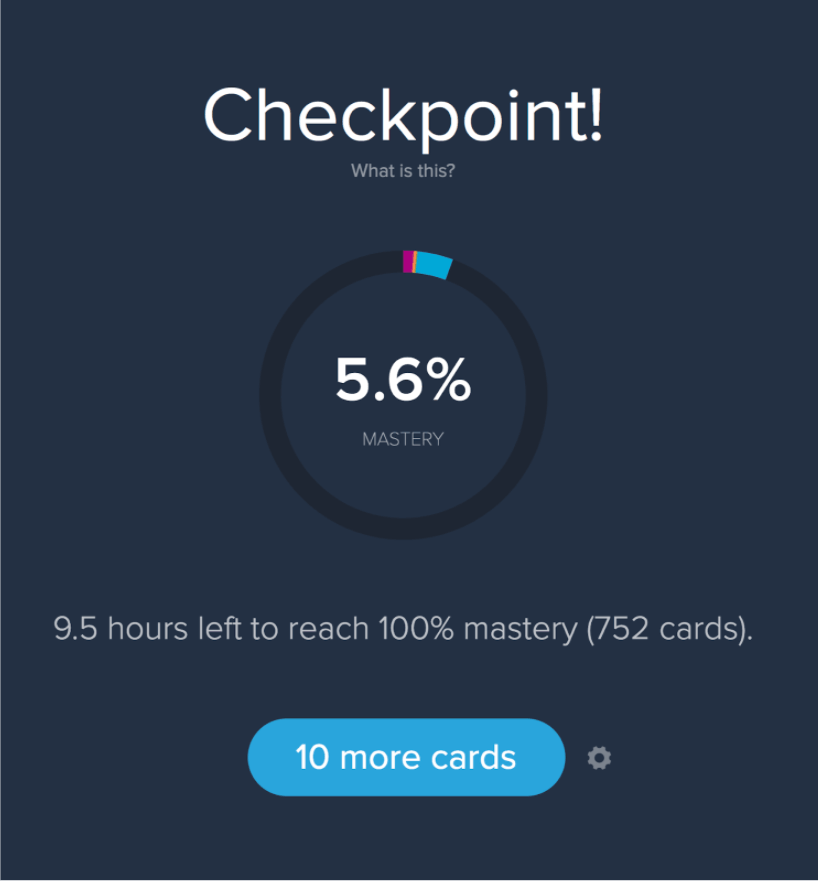When I was in high school, I loved the idea of a study group. It forces you to study when you may not really feel like it and even makes the work slightly less painful. Heck, it could even be fun!
Or so I thought.
I tried it twice—the first time with a few good friends. We lasted 20 minutes before closing our books and turning on MTV. The second time was with this guy I had a devastating crush on. Instead of math, we ended up making out. Needless to say, I had a lot of studying to do after my “group study sessions.” #fail
This begs the following questions: does studying in groups work? Should you study alone? Should you study with friends? Which contexts are best suited to it and how can you use this time efficiently?
We'll answer all of these questions in our guide. Along with 7 tips for studying in groups:
- Tip # 1: Decide if you should study with your friends
- Tip # 2: Five’s a crowd
- Tip # 3: Test drive your candidates
- Tip # 4: Collaborate asynchronously
- Tip # 5: Decide when your group is ready to meet
- Tip # 6: Choose your meeting place wisely
- Tip # 7: Use the Feynman Technique with audience Q&A
First, however, let’s identify what’s going wrong so that you can walk into this with your eyes wide open!
The problem with study groups
As the developers of the world's most effective flashcard app based on cognitive science, the Brainscape team is fascinated by the learning process and what tricks, tools, and techniques can be leveraged to help students excel. So, naturally, group study is one of the time-honored traditions we looked into.
What we have learned from our research and the feedback of our millions of users (as well as the personal experiences of our team members) is that the idea of gathering with people is tempting. We are social creatures, after all. Studying in groups can provide the necessary motivation to pick up your books because once those plans are made, you’re “locked-in”, committed, and held accountable by your peers.
[See also: Finding study motivation when you want to procrastinate]
Your peers might even be able to help you understand the concepts you’ve been struggling with (and vice versa). Or draw your attention to sections you’d completely forgotten about and probably would have missed had you not pooled your resources and put your heads together.
Also, many hands make light work, right? If you get “x” done on your own, imagine what a group of four or five of your friends can do!
It all sounds wonderful but, unfortunately, we have three reasons why studying in groups is rarely effective and typically problematic...
Reason 1: The people we invite over are usually our friends

When students form study groups, they usually invite people they like to join. This is where the trouble starts. Being surrounded by people—particularly friends—is fundamentally distracting. And even though there are some benefits, they tend to be outweighed by the singular fact that we get stimulated and excited by social company. This snatches our focus from where it needs to be: on our books.
Also, inviting your crush over for a “study session” is one of the oldest tricks in the book. The only thing it works for is steamy windows and ruffled clothing.
Reason 2: Studying in groups isn’t efficient
Not to be maudlin about it but a chain is only as strong as its weakest link.
Studying with others slows you down because you are forced to spend time focusing on their weaknesses. This has become a widespread problem in today’s “group work” and collaboration obsessed professional environments, where your overall productivity is often shackled to several (sometimes less competent) teammates. It has us asking: should you study alone?
In fact, organizational psychologist Adrian Furnham routinely comes out against group work when efficiency is a priority because, for all its benefits, group studying hampers productivity.
As the influential psychologist Hans Eysenck observed, introversion fosters creativity by “concentrating the mind on the tasks in hand, and preventing the dissipation of energy on social and sexual matters unrelated to work.”
Reason 3: Lack of personalized learning
When you study with other people, you can’t personalize your learning according to your weaknesses. For example, one of the most effective methods of studying leverages spaced repetition (that is: the repeated delivery of the same information at intervals tailored to how well you know it). Brainscape’s flashcard learning platform does exactly this with each individual user, regularly repeating the flashcards they aren’t confident in, thereby helping them attack their knowledge weaknesses.
This would be impossible to do in a group study setting because everyone has different needs. You simply wouldn’t get anywhere!
So as you can see, group study can be problematic. But that doesn’t mean there's no role for it. You just need to think carefully about how and when you're going to incorporate other people into your study routine.
With that said, here are seven tips for studying in groups ...
Tip # 1: Decide if you should study with your friends

Friendship isn’t a criterion you have to consider when forming a study group. It makes it easier, sure, but what’s more important is that you seek out people who:
- Take their studies seriously,
- Will hold you accountable,
- Can offer value to the study group, and
- Are strong in the areas you are weak and vice versa. This way they can help bring you up to speed and you can return the favor.
If this requires you to purposefully omit to invite your friends to join, so be it. Good friends will understand your need to buckle down and focus.
Tip # 2: Five’s a crowd
Study groups ideally consist of two to five people. Any more than that and things can just get a little too complicated, and everyone’s unique needs lost in the noise of the crowd. Also, juggling more than five schedules to agree on a time to meet can require ninja-level dexterity.
Tip # 3: Test drive your candidates
Sometimes you won’t know how epically crap your friends are at studying until you actually take ‘em for a test drive. Good grades can be a good indicator of candidacy, but just because someone gets straight A’s doesn’t mean they work well in group settings.
A wonderfully efficient way to gauge each member’s seriousness and dedication to exam preparation is to pool your study assets virtually before you meet. You can tell pretty instantly how serious someone is about studying based on their notes (or resounding lack thereof).
For example: If John doesn’t come to the party with any notes, you might want to avoid attaching yourself to that dead weight. If, on the other hand, Jane offers up beautifully written, comprehensive notes, she is clearly an asset to your team (and you should probably marry her too).
Tip # 4: Collaborate asynchronously
Combining your notes, flashcards, and other study tools have the added benefit of drawing your attention to key points you might have missed in your own notes. AND it reframes information in a different way—possibly even a different format like a diagram or concept map—which gives your brain another neural pathway by which to remember that information.
Once you have determined who is awesome and dedicated enough to be in your study group, dump all your notes together in a big Google Doc and start curating one master document.
You can even set up a collaborative class space in Brainscape, where you can make and edit digital flashcards together. With each member of the group taking responsibility for a certain chapter or section, this can go really quickly!
With another two, three, or four sets of eyes on your work—not to mention Brainscape’s well-stocked library of pre-made flashcards—you can put together the perfect collection of flashcards to help you ace your exams.
And with a little collaboration under the belt, you should have a pretty good grip on your study buddies. If they’ve shown their dedication, you can now think about meeting in person.
(BTW, here's some great advice on creating a study routine to maximize your productivity, even if you're super busy.)
Tip # 5: Decide when your group is ready to meet
Many students make the mistake of getting together before they’ve even started reviewing the material, only to find themselves sitting around a table with a mouth full of marbles.
“Ah, okay what next? Where should we start?”
Studying in groups is really good for consolidating the information you’ve already started to onboard by helping other students, and for clearing up your own confusion and addressing weaknesses.
This means that you actually have to go to a group meeting:
- Having prepared; and
- With questions.
If you meet too early, when most people in your group are still clueless about the subject matter, you're wasting everyone's time.
Pro Tip: Study with Brainscape to prepare for your study group session! Once you have put together your flashcard collection for your subject (see Tip # 4), set a goal that everyone achieves a certain percentage mastery of a deck before the meeting. Brainscape’s “mastery-o-meter” (shown in the image below) gauges your progress as you work through a deck of flashcards, showing you what percentage of the deck you’ve mastered (according to your self-assessed confidence rating) and the estimated time you have left.

By setting a goal of, let’s say, 80% for a particular deck of cards (or multiple decks) you are ensuring that everyone shows up to a study session with a baseline degree of preparation.
Tip # 6: Choose your meeting place wisely
Location is just as important for group studying as it is for flying solo. If you host a study session at your home, make sure you curate a separate, tranquil space away from everyone else in the house and from things that may distract like the TV or the family dog.
Attach a clear intention to this space, for example: “The kitchen is for chatting and grabbing refreshments, but once we migrate to the dining room table, everyone agrees we're all business."
Speaking of refreshments, put out some water, soda, and healthy snacks for your group (NO BEER). It’s a nice gesture and will save you from having to interrupt the group study.
Tip # 7: Use the Feynman Technique with audience Q&A
One of the most effective ways to use your group time together is to take turns teaching the material to each other from memory, without looking at the class notes or textbook. Assign each member a section or chapter to teach and then take turns going around the table, stopping after each “mini-lecture” for a Q&A session.
Listening to your study buddies recite their knowledge refreshes your memory, while they benefit enormously from engaging in something called free recall—remembering information from scratch (without any specific cues), which is a potent cognitive learning principle. And, of course, you’ll have your turn, too.
It makes sense to assign areas of strength to each student but actually you should teach the section you’re least confident in as a way to improve your understanding. Peer pressure alone will force you to study that section harder in preparation. And your group can fill in any gaps as you go along.
For more information on teaching as a super effective method for learning, check out Brainscape’s article on the Feynman Technique.
When group study becomes an excuse to drink beers and shoot the sh...
“Without great solitude, no serious work is possible,” - Picasso

From Isaac Newton to Albert Einstein, Bill Gates to Buddha, and Mahatma Gandhi to Marie Curie ... so many of the greatest minds in history relished solitude as a necessity for their genius, creativity, and profound insights.
Study groups can make the work more tolerable and can even prove beneficial in certain contexts. But, as William Whyte put it in his 1956 classic, The Organization Man, “People very rarely think in groups; they talk together, they exchange information, they adjudicate, they make compromises. But they do not think; they do not create.”
So ... should you study alone? Or, should you study with friends?
The take-home message here is that it depends. Be aware of the limitations of studying in groups and the very specific ways it can advance your knowledge. Don’t expect more and don’t settle for less.
So use Brainscape to prepare yourself and your study group for your study sessions, but be on the lookout for those red flags, and if you find yourself wasting time, fly solo!
If study motivation is your problem, here is some excellent reading for you:
- Getting motivation to study when all you want to do is procrastinate
- How to build your willpower and self discipline like a warrior
- How to study effectively with LESS total effort
References
Adams, A. (2023, March 7). The benefits of study groups. Office of Professional Programs. https://professionalprograms.umbc.edu/blog/the-benefits-of-study-groups/
Buchanan, R. (2011, April 28). Looking back: the controversial Hans Eysenck. BPS. https://www.bps.org.uk/psychologist/looking-back-controversial-hans-eysenck
Cain, S. (2012, January 13). The Rise of Groupthink. The New York Times. https://www.nytimes.com/2012/01/15/opinion/sunday/the-rise-of-the-new-groupthink.html?pagewanted=all&_r=0
Duke University Academic Resource Center. (2022). How to form a successful study group: tips and strategies. Western Connecticut State University. http://www.wcsu.edu/asb/wp-content/uploads/sites/12/How-to-Form-a-Successful-Study-Group.pdf
Rybczynski, S. M., & Schussler, E. E. (2011). Student use of Out-of-Class study groups in an introductory undergraduate Biology course. CBE—Life Sciences Education, 10(1), 74–82. https://doi.org/10.1187/cbe-10-04-0060
Singer, M. (2017). Memory for Text and Discourse: Retrieval and Comprehension. In Elsevier eBooks (pp. 357–381). https://doi.org/10.1016/b978-0-12-809324-5.21065-1
UNC-Chapel Hill Learning Center. (2024, February 19). Study Groups – Learning Center. Learning Center. https://learningcenter.unc.edu/tips-and-tools/study-partners/
Whyte, W. H. (1956). The organization man. http://ci.nii.ac.jp/ncid/BA3746343X
